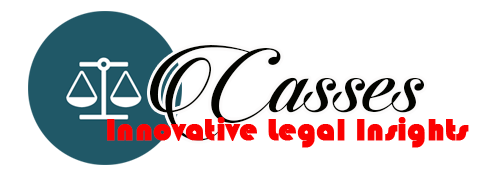
Exploring the Benefits of Alternative Dispute Resolution: An Effective Solution for Conflict Resolution
Exploring the Benefits of Alternative Dispute Resolution: An Effective Solution for Conflict Resolution
Alternative Dispute Resolution (ADR) is a process that offers parties involved in a conflict or dispute an alternative to traditional litigation. It provides a platform for resolving conflicts in a more efficient, cost-effective, and collaborative manner. In this article, we will delve into the various benefits of ADR and shed light on how it can be an effective solution for conflict resolution.
Benefits of Alternative Dispute Resolution
1. Time and Cost Efficiency:
One of the key advantages of ADR is its ability to save time and money compared to traditional litigation. Court proceedings can be lengthy and expensive due to the formalities involved, such as filing fees, attorney fees, and court appearances. ADR methods, on the other hand, offer a streamlined and faster process, reducing the overall time and costs associated with resolving disputes.
2. Flexibility and Control:
ADR provides parties with more control over the outcome of their dispute. Unlike litigation where a judge or jury decides the final verdict, ADR allows the parties involved to actively participate in the resolution process. This flexibility enables them to reach a mutually satisfactory agreement, tailored to their specific needs and interests.
3. Preserving Relationships:
Unlike adversarial litigation, ADR focuses on fostering communication, understanding, and cooperation between the parties. This approach helps preserve relationships, especially in disputes involving businesses or ongoing personal relationships. By promoting dialogue and finding common ground, ADR allows parties to maintain a more positive and constructive relationship moving forward.
4. Confidentiality:
Confidentiality is a fundamental aspect of ADR. Unlike public court proceedings, ADR methods, such as mediation or arbitration, ensure that the discussions and information shared during the process remain confidential. This aspect encourages parties to be more open and honest, facilitating a genuine exploration of potential solutions without fear of public disclosure.
5. Creative Problem Solving:
ADR methods encourage creative problem solving by considering the unique interests and needs of each party. It provides a platform for exploring innovative solutions that may not be available through traditional litigation. This flexibility allows for more tailored and mutually beneficial outcomes, fostering a sense of satisfaction and fairness among the parties involved.
FAQs (Frequently Asked Questions)
Q: What types of disputes can be resolved through Alternative Dispute Resolution?
A: ADR can be used to resolve a wide range of disputes, including but not limited to commercial disputes, employment conflicts, family disputes, construction disagreements, and community conflicts.
Q: Is Alternative Dispute Resolution legally binding?
A: The degree of legal enforceability depends on the specific ADR method chosen. For example, arbitration awards can be legally binding, while mediation outcomes are typically non-binding unless the parties agree otherwise.
Q: How long does the Alternative Dispute Resolution process take?
A: The duration of the ADR process varies depending on the complexity of the dispute and the chosen method. Some disputes can be resolved within a few weeks, while others may take several months. However, ADR generally offers a quicker resolution compared to traditional litigation.
Q: Can ADR be used alongside traditional litigation?
A: Yes, ADR can be used alongside traditional litigation. Parties involved in a lawsuit can choose to explore ADR methods such as mediation or negotiation to potentially reach a settlement before or during the litigation process. This can help save time, costs, and reduce the strain on the court system.
If you are interested in learning more about the benefits of Alternative Dispute Resolution or want to explore further resources, you can check out this article or this resource for more information.
